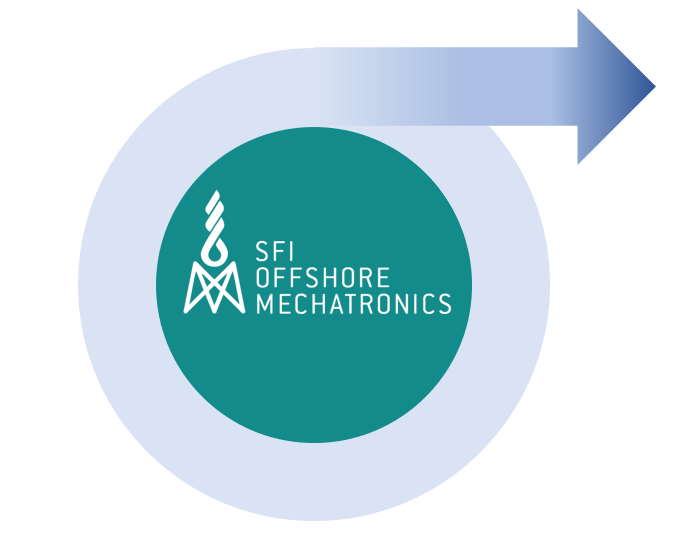
Unlocking the innovation potential in a centre for research-based innovation requires an equally important contributions from both the research partners and the industry partners. In an ideal world the research results are relevant and mature enough for the companies to directly apply it in their business. This is however rarely the case, which means that both push and pull efforts are needed to bring promising research results forward.
The path from a TRL3-4 (Technology Readiness Level) up to TRL7-9 which is expected for a company to make large investments into new concepts and technology is known to be challenging. To reach a higher TRL level and to shape new concepts we encourage the centre industry partners to establish industry-driven spin-off projects. A spin-of project is enabling more funding, a dedicated and closer collaboration and also other terms and conditions than what is possible within the scope of a centre.
In SFI Offshore Mechatronics we keep track of the spin-offs. They are categorized as either direct spin-offs or indirect spin-offs. Direct spin-offs from the centre are initiated in collaboration with the academic partners. Indirect spinoffs are within the thematic areas of the research in the centre but initiated independently by the industry partners. The total external funding for the spin-off projects is approaching 125MNOK counting 15 direct spin-offs and 18 indirect spin-offs.
Three companies has also been established as spin-offs from the centre activities and by people with affiliation to the centre. Motiontech AS (founded by SFI Offshore Mechatronics PhD alumni Sondre Sanden Tørdal and related to research in WP2), DropTech As (founded by Mechatronics master students Emil Mühlbradt Sveen and Jørn Folmar Nilsen), Machine Prognostics AS (spin-off from Teknova / Norce Research and related to research in WP5).
